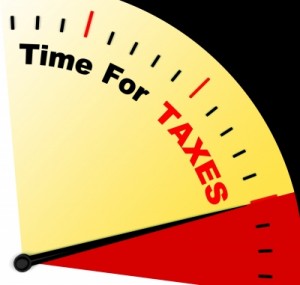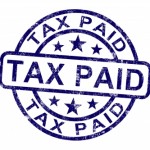While tax season may have wrapped up for this year, there’s already some buzz about a new tax topic for next year, the Health Insurance Premium Tax Credit and health insurance subsidies which will begin on January 1, 2014.
What is the Health Insurance Tax Credit?
The new health care premium tax credits are part of the Health Care Reform Bill called the Affordable Care Act (ACA). The tax credits will be used to purchase health insurance through the new health care exchanges.
Health Insurance Tax Credit
The Health Insurance Tax Credit is:
Refundable. The health care tax credit is refundable, which means you can receive a tax refund even if the credit is more than your total tax.
Advanceable. You can receive the tax credit in advance of filing your tax return to help pay for your premiums. However, if you take an advance of the tax credit, you will have to calculate the actual tax credit when you file your tax return. If your actual health insurance tax credit is less than the amount of money that was advanced, you will have to repay the difference. However, repayments will be capped based on income.
Who is Eligible for the Health Insurance Premium Tax Credit?
Eligibility for the health care tax credit is based on the following:
- You must purchase health insurance through the new insurance exchanges.
- Your household income for the tax year is between 100% and 400% of the Federal Poverty Level (FPL).
- If you are eligible for other coverage (Medicare, Medicaid or affordable employer coverage) you are not eligible for the tax credit.
Health Care Tax Credit Amounts
What is the amount of the tax credit?
The tax credit will adjust the annual premiums you pay to be a percentage of your household income. Annual premiums for those who qualify will not exceed 9.5% of household income. The contribution percent goes from 2% at the 100% of FPL to 9.5% at 400% of FPL. There is a helpful chart showing the contribution percentages at each income level on page 5 of this document from the NCSL.
What is Federal Poverty Level?
The 2013 Federal Poverty Level income ranges for 100% of FPL to 400% of FPL are:
- 1 Person Household: $11,490 – $45,960
- 2 Person Household: $15,510 – $62,040
- 3 Person Household: $19,530 – $78,120
- 4 Person Household: $23,550 – $94,200
- 5 Person Household: $27,570 – $110,280
You can see the complete Federal Poverty Level ranges for various sized households.
What is household income?
Household income for the tax credit is defined as Modified Adjusted Gross Income. MAGI currently excludes income that is tax deferred under 401ks.
Health Insurance Tax Credit Calculator
Calculating the tax credit based on your family size, age, and income is best done with one of the health care tax credit calculators.
As soon as the tax credits are finalized, we will add the calculations to our tax calculator for next year.
The ACA Cliff
If you play around with the calculator, you’ll notice the large “cliff” at the end of the tax credit. For example, for my family of 5, to qualify for the health insurance tax credit at the 400% level, the tax credit is $2503. This is based on a premium of $13126 and an income of $111,823. If the household income goes up to $111,824 (or you earn $1 more), the tax credit drops to $0. Essentially, the extra dollar is taxed at a rate of 250300%.
If you plan to use this tax credit and your income is near the cliff, it will be very important to not only understand tax brackets, but also understand how the cliff can dramatically impact your taxes.
You can see an illustration of how the cliff works in detail on the Obamacare Cliff website.
Claiming the Premium Tax Credit
Filing a tax return. Even if you don’t normally file a tax return, because you don’t normally meet the minimum income to file taxes, this will be a case where you will need to file a tax return to claim the tax credit.
Filing Status. Your health insurance credit will depend on your filing status. If you are married, you must file jointly to claim the health care tax credit. In addition, if someone else claims you as a dependent, you will not be eligible for the health insurance subsidies.
Tax Penalties. The Individual Mandate and tax penalties for skipping health insurance will also go into effect at the same time as the ACA tax credit.
For more, see How to Claim the Health Insurance Premium Tax Credit.
Health Care Tax Credit Helpful Resources
More Health Insurance Tax Topics

 Print
|
Print
|  Email
|
Comments?
Email
|
Comments?






